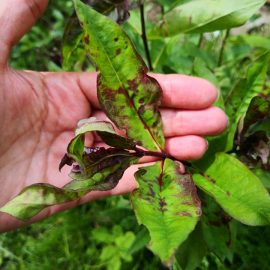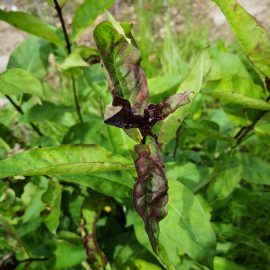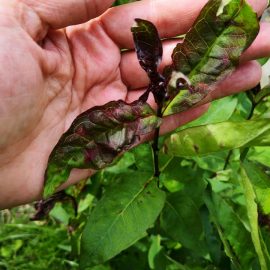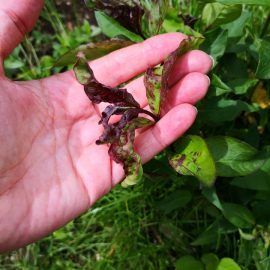Phlox, planting guide and care work
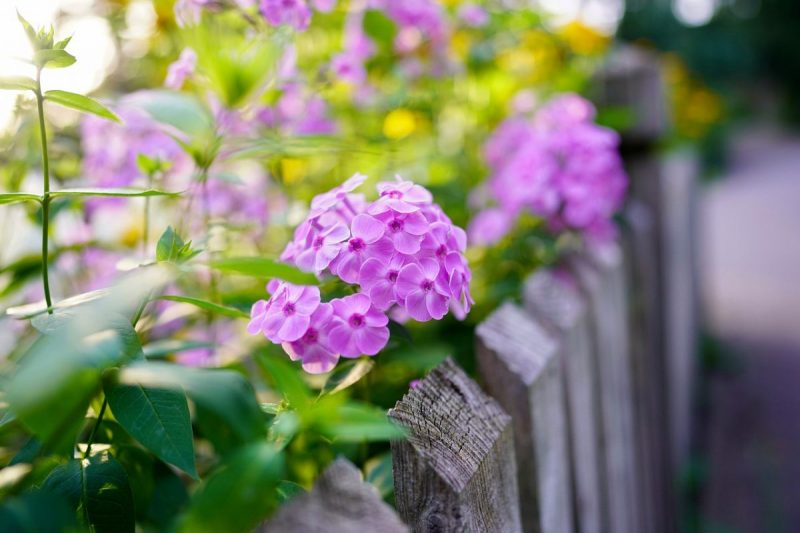
Phlox is a genus of perennial or annual plants, comprising about 60 species from the Polemoniaceae family. They are herbaceous, flowering plants, originating from North America and Siberia. They are widely spread, from the steppe and forest-steppe areas to the alpine tundra area.
Some species, such as Phlox paniculata, grow vertically and have straight stems. Other species (e.g. Phlox subulata) are creeping and small in size. In some species, the stems become wooden over time.
Most species grow spontaneously, sometimes the creeping specimens are planted as ground covers. The only decorative species found in some European countries is Phlox paniculata.
The name of the genus comes from Greek and it means ” flame “, referring to the bright color of the flowers.
Phlox paniculata
It is a species native to the eastern part of the United States, growing in the form of bushes, with a height of 1-1.2 m. It has wooden, vertical stems. The leaves are oppositely arranged, are simple, have an elliptical shape and an intense green color. It blooms in July-September. The flowers are fragrant, tubular, made of 5 petals that are variously colored, depending on the cultivar. They grow clustered in terminal panicles.
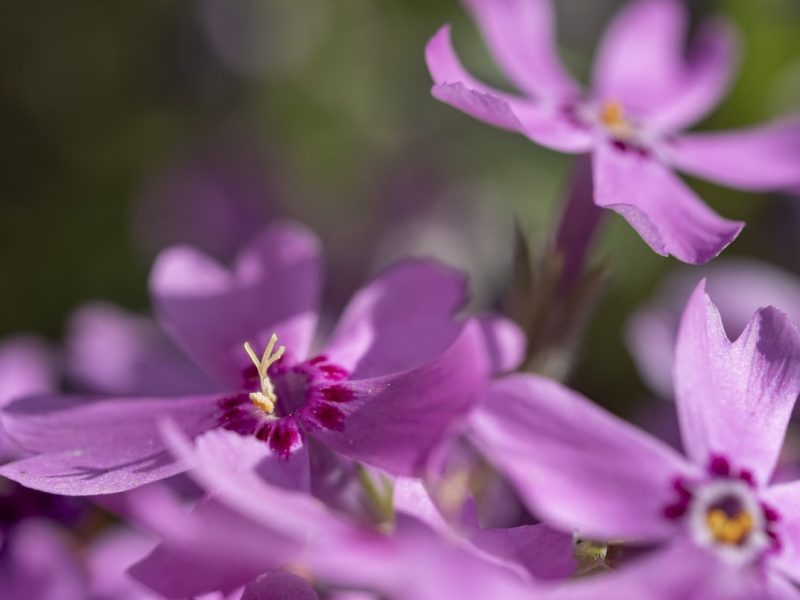
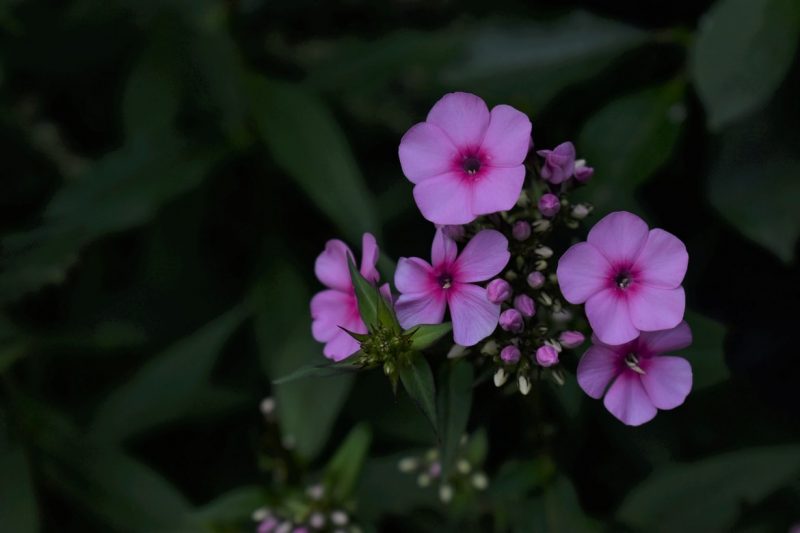
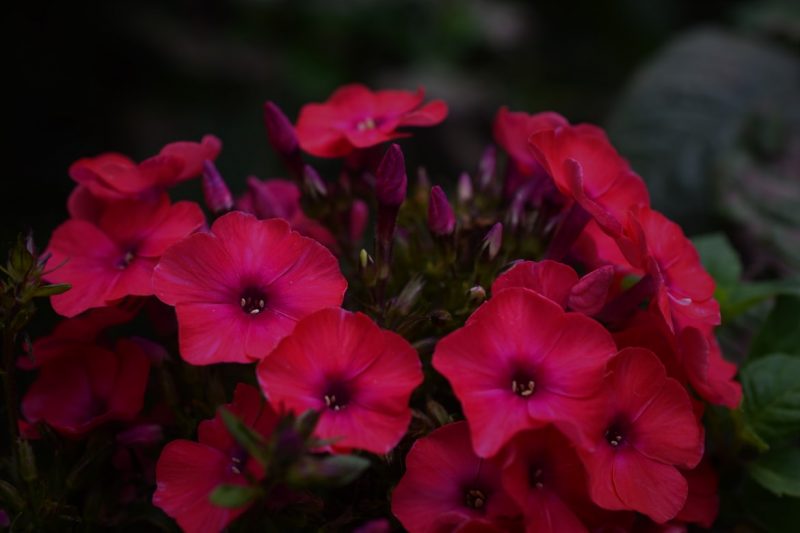
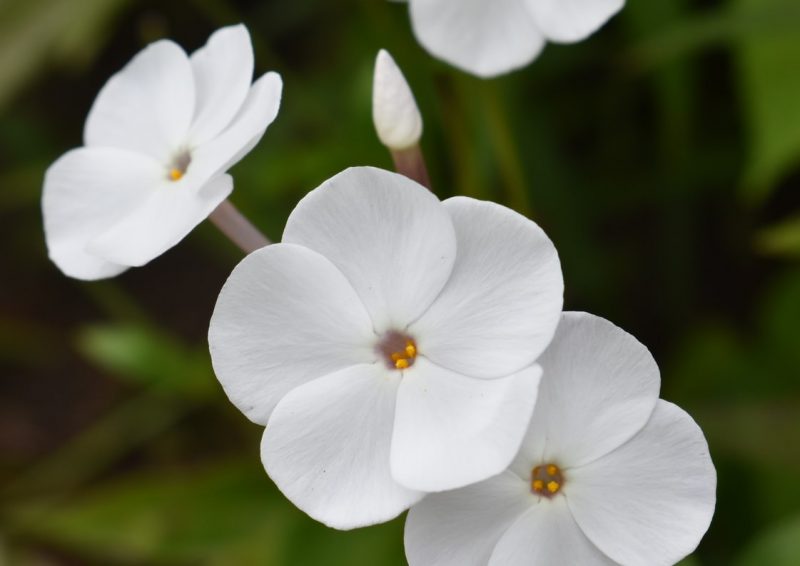
Cultivars:
‘Alba Grandiflora’ – it reaches a height of 1. 2 m, it has lanceolate leaves and intensely fragrant flowers, colored in pure white.
‘Becky Towe’ – with pink-purple flowers and leaves with white-yellow edges.
‘Eva Foerster’ – it reaches a height of 0.8 m, it has flowers with pink petals. The center of the flowers is white.
‘Flamingo’ – it has a height of 1.1 m. The flowers are light pink, with a dark pink center.
‘Grey Lady’ – it reaches a height of 1 m and it has gray-purple flowers.
‘Miss Mary’ – it has carmine-red flowers.
‘Norah Leigh’ – a 1 m tall cultivar, with pink-lilac flowers with a dark pink center.
‘Prince of Orange’ – it reaches a height of 0.8 m, and it has orange flowers.
‘Rosa Pastell’ – it has a height of 0.7 m and it has light pink flowers with an intense pink center.
‘Starfire’ – it has a height of 0.9 m and it has bright red flowers.
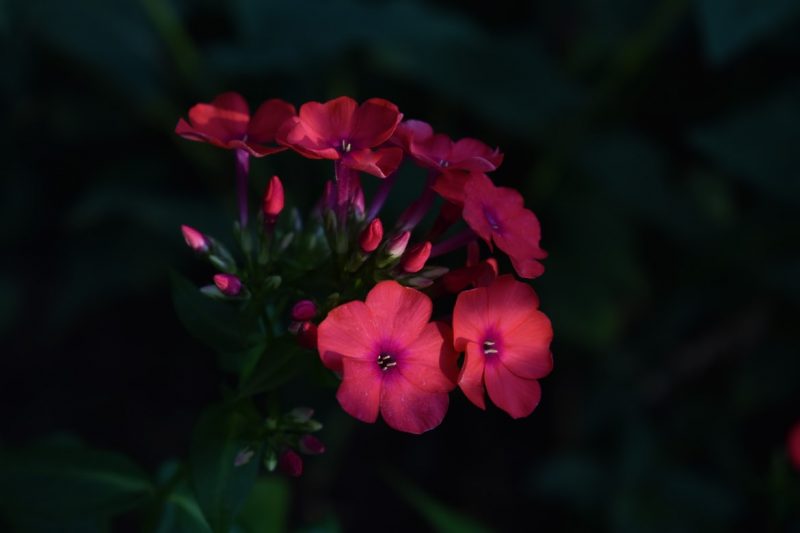
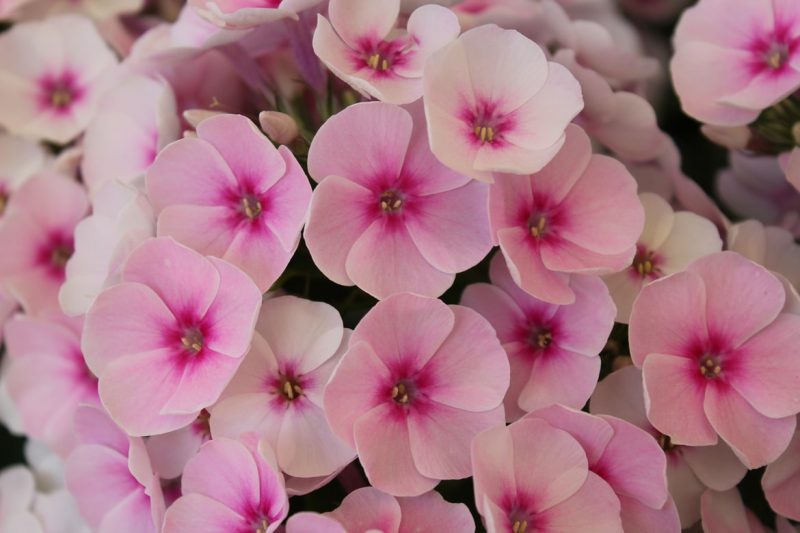
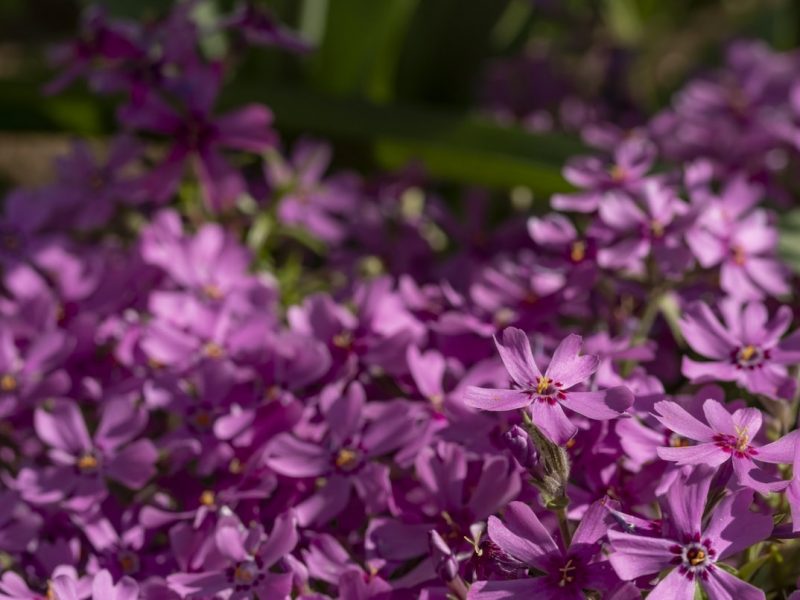
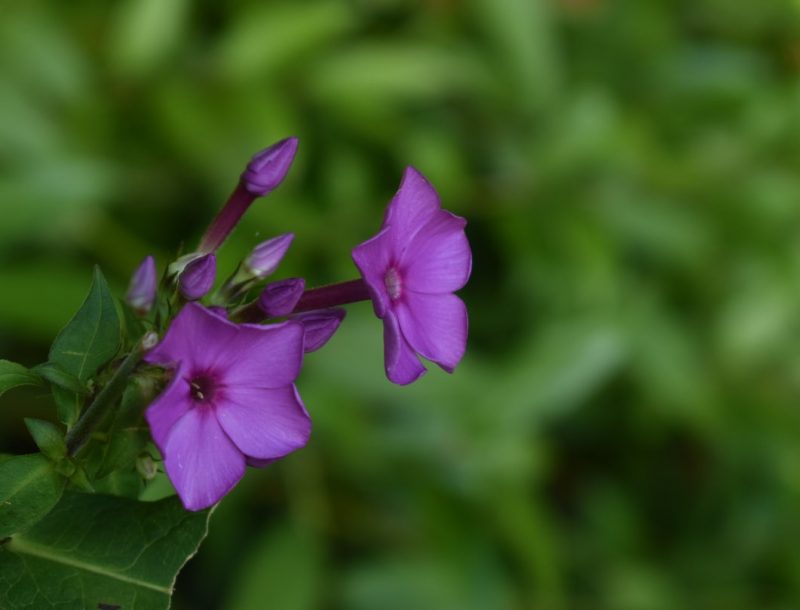
Recommended products
-
You can find products on a different store
Change Store -
You can find products on a different store
Change Store -
You can find products on a different store
Change Store -
You can find products on a different store
Change Store -
You can find products on a different store
Change Store -
You can find products on a different store
Change Store -
You can find products on a different store
Change Store -
You can find products on a different store
Change Store -
You can find products on a different store
Change Store -
You can find products on a different store
Change Store -
You can find products on a different store
Change Store -
You can find products on a different store
Change Store -
You can find products on a different store
Change Store -
You can find products on a different store
Change Store -
You can find products on a different store
Change Store -
You can find products on a different store
Change Store -
You can find products on a different store
Change Store -
You can find products on a different store
Change Store -
You can find products on a different store
Change Store -
You can find products on a different store
Change Store -
You can find products on a different store
Change Store -
You can find products on a different store
Change Store -
You can find products on a different store
Change Store -
You can find products on a different store
Change Store
Environmental conditions
Light. They grow and bloom abundantly in places with direct sunlight or partial shade.
Temperature. They have no specific temperature requirements. They are plants that adapt well to a temperate continental transitioning into an oceanic climate.
Soil. They prefer fertile soils, rich in humus, with good water drainage.
Care
Watering. Watering should be done moderately, so that the soil stays moist, but not too wet. Excessive moisture can affect the plants.
Fertilization. To stimulate flowering, it is recommended to administer a special fertilizer during the vegetative growth period (summer-autumn).
Recommended products
-
You can find products on a different store
Change Store -
You can find products on a different store
Change Store -
You can find products on a different store
Change Store -
You can find products on a different store
Change Store -
You can find products on a different store
Change Store -
You can find products on a different store
Change Store -
You can find products on a different store
Change Store -
You can find products on a different store
Change Store -
You can find products on a different store
Change Store -
You can find products on a different store
Change Store -
You can find products on a different store
Change Store -
You can find products on a different store
Change Store -
You can find products on a different store
Change Store -
You can find products on a different store
Change Store -
You can find products on a different store
Change Store -
You can find products on a different store
Change Store -
You can find products on a different store
Change Store -
You can find products on a different store
Change Store -
You can find products on a different store
Change Store -
You can find products on a different store
Change Store -
You can find products on a different store
Change Store -
You can find products on a different store
Change Store -
You can find products on a different store
Change Store -
You can find products on a different store
Change Store
Pruning. In winter, it is recommended to cut the plants to the ground level.
Recommended products
-
You can find products on a different store
Change Store -
You can find products on a different store
Change Store -
You can find products on a different store
Change Store -
You can find products on a different store
Change Store -
You can find products on a different store
Change Store -
You can find products on a different store
Change Store -
You can find products on a different store
Change Store -
You can find products on a different store
Change Store -
You can find products on a different store
Change Store -
You can find products on a different store
Change Store -
You can find products on a different store
Change Store -
You can find products on a different store
Change Store -
You can find products on a different store
Change Store -
You can find products on a different store
Change Store -
You can find products on a different store
Change Store -
You can find products on a different store
Change Store -
You can find products on a different store
Change Store -
You can find products on a different store
Change Store -
You can find products on a different store
Change Store -
You can find products on a different store
Change Store -
You can find products on a different store
Change Store -
You can find products on a different store
Change Store -
You can find products on a different store
Change Store -
You can find products on a different store
Change Store
Diseases and pests. It may be affected by powdery mildew. To prevent the disease, it is recommended to keep the shrub airy.
Recommended products
-
You can find products on a different store
Change Store -
You can find products on a different store
Change Store -
You can find products on a different store
Change Store -
You can find products on a different store
Change Store -
You can find products on a different store
Change Store -
You can find products on a different store
Change Store -
You can find products on a different store
Change Store -
You can find products on a different store
Change Store -
You can find products on a different store
Change Store -
You can find products on a different store
Change Store -
You can find products on a different store
Change Store -
You can find products on a different store
Change Store -
You can find products on a different store
Change Store -
You can find products on a different store
Change Store -
You can find products on a different store
Change Store -
You can find products on a different store
Change Store -
You can find products on a different store
Change Store -
You can find products on a different store
Change Store -
You can find products on a different store
Change Store -
You can find products on a different store
Change Store -
You can find products on a different store
Change Store -
You can find products on a different store
Change Store -
You can find products on a different store
Change Store -
You can find products on a different store
Change Store
The pests that can infest the plant are mites.
Recommended products
-
You can find products on a different store
Change Store -
You can find products on a different store
Change Store -
You can find products on a different store
Change Store -
You can find products on a different store
Change Store -
You can find products on a different store
Change Store -
You can find products on a different store
Change Store -
You can find products on a different store
Change Store -
You can find products on a different store
Change Store -
You can find products on a different store
Change Store -
You can find products on a different store
Change Store -
You can find products on a different store
Change Store -
You can find products on a different store
Change Store -
You can find products on a different store
Change Store -
You can find products on a different store
Change Store -
You can find products on a different store
Change Store -
You can find products on a different store
Change Store -
You can find products on a different store
Change Store -
You can find products on a different store
Change Store -
You can find products on a different store
Change Store -
You can find products on a different store
Change Store -
You can find products on a different store
Change Store -
You can find products on a different store
Change Store -
You can find products on a different store
Change Store -
You can find products on a different store
Change Store
Sometimes it can also be attacked by slugs or snails.
Recommended products
-
You can find products on a different store
Change Store -
You can find products on a different store
Change Store -
You can find products on a different store
Change Store -
You can find products on a different store
Change Store -
You can find products on a different store
Change Store -
You can find products on a different store
Change Store -
You can find products on a different store
Change Store -
You can find products on a different store
Change Store -
You can find products on a different store
Change Store -
You can find products on a different store
Change Store -
You can find products on a different store
Change Store -
You can find products on a different store
Change Store -
You can find products on a different store
Change Store -
You can find products on a different store
Change Store -
You can find products on a different store
Change Store -
You can find products on a different store
Change Store -
You can find products on a different store
Change Store -
You can find products on a different store
Change Store -
You can find products on a different store
Change Store -
You can find products on a different store
Change Store -
You can find products on a different store
Change Store -
You can find products on a different store
Change Store -
You can find products on a different store
Change Store -
You can find products on a different store
Change Store
Planting
It should be done in spring, at temperatures above 5° C, if the soil is not frozen and there is no danger of frost. A distance of 30-60 cm between plants must be ensured. Be sure to purchase planting material from authorized nurseries. Immediately after planting, water abundantly. After that, the soil must be kept moist.
Propagation
They can be multiplied by dividing the bush, in spring or autumn or through “green” cuttings, harvested in spring.
Recommended products
-
You can find products on a different store
Change Store -
You can find products on a different store
Change Store -
You can find products on a different store
Change Store -
You can find products on a different store
Change Store -
You can find products on a different store
Change Store -
You can find products on a different store
Change Store -
You can find products on a different store
Change Store -
You can find products on a different store
Change Store -
You can find products on a different store
Change Store -
You can find products on a different store
Change Store -
You can find products on a different store
Change Store -
You can find products on a different store
Change Store -
You can find products on a different store
Change Store -
You can find products on a different store
Change Store -
You can find products on a different store
Change Store -
You can find products on a different store
Change Store -
You can find products on a different store
Change Store -
You can find products on a different store
Change Store -
You can find products on a different store
Change Store -
You can find products on a different store
Change Store -
You can find products on a different store
Change Store -
You can find products on a different store
Change Store -
You can find products on a different store
Change Store -
You can find products on a different store
Change Store
In addition:
- the name of the species (Paniculata) comes from the panicle inflorescences of the plant.
- to stimulate re-flowering, dry inflorescences have to be removed regularly.
- the intensely fragrant flowers often attract butterflies.
- compact soils and high moisture at the roots level cause the death of the plant.














































































































































































































































































































































































































































